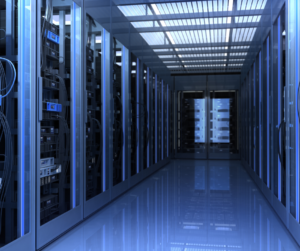In recent years, remote work has become increasingly popular and only accelerated in the wake of the COVID-19 pandemic. Companies of all sizes are shifting towards a remote-first approach, and IT infrastructure management plays a critical role in supporting remote work. Learn more about the basics of remote work IT infrastructure, security considerations, and best practices for preparing your IT infrastructure for remote work.
Understanding the Basics of Remote Work IT Infrastructure Management
 To support remote work, it’s important to understand the basics of remote work IT infrastructure. Two key components are virtual private networks (VPNs) and cloud computing.
To support remote work, it’s important to understand the basics of remote work IT infrastructure. Two key components are virtual private networks (VPNs) and cloud computing.
Virtual Private Networks (VPNs):
VPNs are a secure way to connect to a remote network over the internet. They encrypt all traffic between your device and the remote network, ensuring your data is secure. Some benefits of using VPNs for remote work include:
- Enhanced Security: VPNs provide enhanced security by encrypting data transmitted between devices. This makes it much more difficult for hackers to intercept and steal sensitive information. Additionally, VPNs can help protect against malicious attacks by masking the user’s IP address and location.
- Better Connectivity: VPNs provide better connectivity by allowing users to access resources that might otherwise be restricted. For example, users can connect to a VPN to access a company’s internal network from a remote location. This ensures that employees have access to the tools and resources they need to be productive, no matter where they are.
- Increased Flexibility: VPNs offer increased flexibility by allowing users to connect to the internet from different locations and devices. This can be particularly helpful for remote workers who need access to company resources while on the go. With a VPN, users can connect securely to the internet from any location, whether at home, in a coffee shop, or on the road.
Cloud Computing:
Cloud computing is a model for delivering on-demand computing resources over the internet. It allows you to access data and applications from anywhere with an internet connection, which is critical for remote work. Cloud computing offers benefits such as:
- Scalability: Cloud computing allows businesses to quickly scale up or down their IT infrastructure based on their needs. As businesses grow, they need more computing power, storage, and bandwidth. With cloud computing, companies can easily add new resources without major capital expenditures. This flexibility enables businesses to respond to changing market conditions and stay competitive.
- Accessibility: One of the biggest advantages of cloud computing is accessibility. Cloud-based services can be accessed from anywhere with an internet connection. This means that employees can work remotely, increasing productivity and reducing the need for physical office space. Additionally, customers can access cloud-based services 24/7, leading to higher customer satisfaction.
- Cost Savings: Cloud computing can lead to significant cost savings for businesses. With cloud-based services, businesses do not need to invest in expensive hardware or software. Instead, they pay only for the resources they use on a pay-as-you-go basis. Additionally, cloud computing reduces the need for on-site IT staff and the associated costs of maintaining and upgrading infrastructure.
Security Considerations for Remote Work:
Remote work also comes with cybersecurity threats that must be considered. Cybercriminals often take advantage of remote workers to gain access to sensitive data or to launch attacks on company networks. Understanding these threats and implementing best practices for securing remote work is important.
Cybersecurity Threats of Remote Work:
With the rise of remote work, companies are facing new security challenges. Cybercriminals are exploiting the vulnerabilities of remote work environments to launch attacks on company networks, steal sensitive data, and cause disruptions. Here are some common types of threats that companies with remote workers should be aware of:
 Phishing attacks:
Phishing attacks:
Phishing attacks are one of the most common forms of cybercrime. Cybercriminals send fake emails or messages that appear to be from a trusted source, such as a bank or a colleague, to trick employees into divulging sensitive information or clicking on malicious links.- Malware attacks:
Malware attacks involve infecting devices with malicious software, such as viruses or trojans. These attacks can be used to steal data, compromise systems, or launch attacks on other devices. - Man-in-the-middle attacks:
Man-in-the-middle attacks occur when a cybercriminal intercepts communication between two devices, such as a remote worker’s computer and the company’s server. This allows the attacker to eavesdrop on the communication, steal data, or inject malicious code. - Remote access attacks:
Remote access attacks target vulnerabilities in remote access tools, such as virtual private networks (VPNs). Cybercriminals can use these vulnerabilities to gain unauthorized access to company networks, steal data, or launch further attacks. - Insider threats:
Insider threats involve employees who intentionally or unintentionally cause security breaches. Remote workers may be more vulnerable to insider threats due to a lack of oversight and monitoring.
Best Practices for Securing Remote Work:
Some best practices for securing remote work include using strong passwords, updating software regularly, avoiding public Wi-Fi, and implementing multi-factor authentication. Home network security is an often overlooked consideration for many companies with remote workers. Establishing policies and procedures for remote work and regularly training employees on cybersecurity awareness is also essential.
Preparing Your IT Infrastructure for Remote Work:
To support remote work effectively, you need to assess, plan, and implement changes to your IT infrastructure. Here are some steps you can take to prepare your IT infrastructure for remote work.
- Assess Your IT Infrastructure:
Assess your current IT infrastructure and identify areas that need improvement. This might include upgrading hardware or software, improving network performance, or increasing cybersecurity measures. - Plan for Remote Work:
Determine which remote work options make sense for your company and create a plan for implementing them. This might involve investing in new tools or upgrading existing ones to support remote work. - Implement and Test Your IT Infrastructure:
Implement the changes you’ve identified and test your IT infrastructure to ensure that it’s working correctly. This might involve conducting a pilot test or training employees on new tools and processes.
Empower Your Remote Workforce with a Strong IT Infrastructure:
Remote work is here to stay, and IT infrastructure management plays a crucial role in supporting it. You can create a productive and secure environment by understanding the basics of remote work IT infrastructure management, considering security considerations, and preparing your IT infrastructure for remote work.







